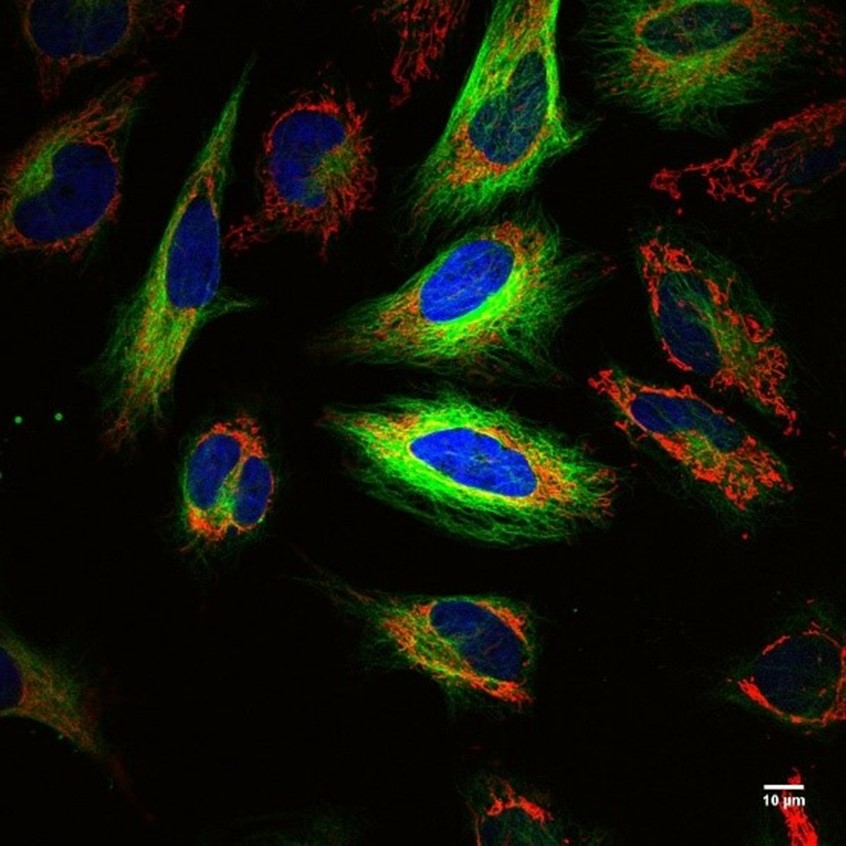The health industry has been impacted by numerous technological advances in recent years. Among the most promising innovations are Artificial Intelligence (AI), Intraoperative Imaging, and Virtual Reality.
Artificial Intelligence
"AI refers to a field of computer science dedicated to the creation of systems performing tasks that usually require human intelligence."1 AI can support healthcare in many ways and will become an essential part of the practice of medicine in the years ahead. One of the AI subfields is Machine Learning, which concerns computers “learning” from data. Machine learning is currently employed in early detection of cancer, among other applications.
In a recent study, AI was used to identify early signs of lung cancer on old Computerized Tomography (CT) scans acquired one or two years before doctors even suspected cancer. At present, 70% of lung cancer detections happen in later stages of the disease, lowering survival rate. With early detection, patients can be treated much sooner, increasing their chances of survival. AI is thus a life-changing tool in this area, providing us with the possibility of reducing death cases by 20-30%.2
Intraoperative Imaging
Advanced imaging technologies are involved in many steps of a patient’s cancer fighting journey, including surgery. Intraoperative imaging includes imaging techniques that guide surgeons during operations. Imaging-guidance or imaging-navigation are developed to help surgeons delineate and localize surgical regions and are used during the surgical resection. These advanced imaging technologies can make invisible parts of the tumor visible, allowing for greater success in surgery.
One particular aspect of intraoperative imaging is Fluorescence Imaging (FI), a technology that helps visualize biological processes in living organisms. By using fluorescent dyes and proteins to mark molecular mechanisms and structures, FI can detect targeted cells, giving surgeons real-time image navigation. The technique is very sensitive and precise alone, but current research is looking at integrated imaging systems combining FI and nuclear imaging with the goal of providing even more sensitive capabilities for detecting cancer, in real-time without changing the look of the surgical field.3

Figure 1: An example of Fluorescence imaging
Virtual Reality
Virtual Reality is employed in medical training, pain management, physical therapy and rehabilitation, and more.4 In 2016, Dr. Shafi Ahmed conducted the first virtual reality surgery. Five years later, virtual reality is now used to train aspiring surgeons by allowing them to practice operations. The results are very impressive. According to a Harvard Business Review study, surgeons trained on virtual reality have boosted their overall performance by 230%. They can practice and train for general surgeries as well as for those that are more complex.
Virtual reality is also used to improve patients’ experience in hospitals. It has been shown that it can reduce stress by 94%, anxiety by 73%, and pain by 80%.5 It can be an option to help patients manage pain such as that common in childbirth or burn injuries, and is also used for physical therapy. Virtual reality improves patients’ confidence and motivation, an important factor during recovery. Finally, this technology is employed to confront patients with their addictions and train them to resist dependence.
Conclusion
Advanced Imaging technologies are having a profound impact on health care. We can only be excited about what tomorrow will bring.
Whatever the future holds, Keosys will play its part. Our internal R&D team focuses on the use of artificial intelligence to help interpret images and create virtual cohorts for use in clinical trials. You can check out this important work at https://projet-epicure.fr/
1 Artificial intelligence in medical imaging: threat or opportunity? Radiologists again at the forefront of innovation in medicine (nih.gov)
2 Artificial intelligence is improving the detection of lung cancer (nature.com)
3 Intraoperative biophotonic imaging systems for image-guided interventions (nih.gov)
4 Applications of Virtual Reality in Medicine (news-medical.net)
5 Ways Medical Virtual Reality Is Changing Healthcare (medicalfuturist.com)



